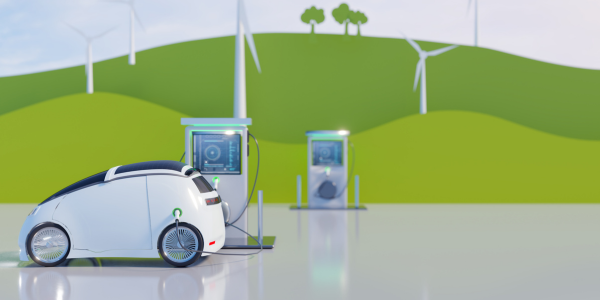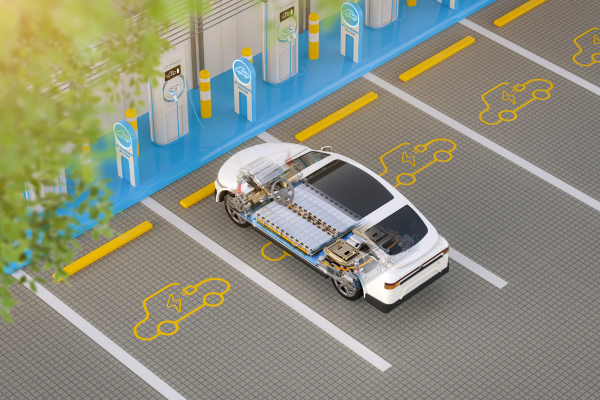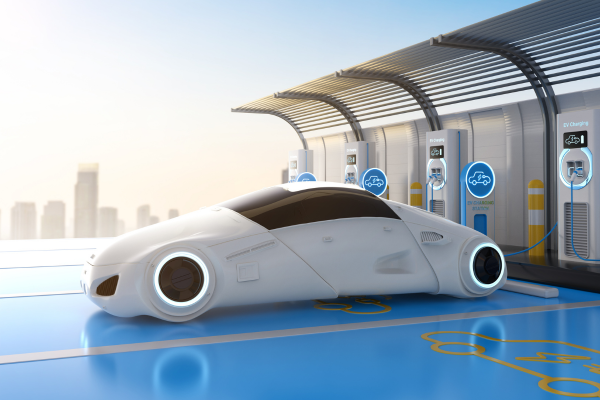Table Of Contents
- Introduction
- Electric Vehicles and their influence on Energy Grid.
- Conclusion
- Frequently Asked Questions
Introduction:
As we step into 2024, the automotive landscape is undergoing a profound metamorphosis, propelled by the widespread adoption of electric vehicles (EVs). Yet, the impact of this transformation extends far beyond the realm of transportation; it reverberates through the very infrastructure that powers our modern societies—the energy grid.
In the corridors of innovation, where technology intersects with sustainability, a paradigm shift is underway, reshaping our perceptions of energy distribution and consumption. This article embarks on a journey to unravel the intricate tapestry woven by electric vehicles and their influence on the energy grid.
From the bustling streets of urban metropolises to the tranquil suburbs, the symbiotic relationship between EVs and the grid is forging a path towards a more resilient, interconnected future. As we delve deeper into the realms of integration, management, and policy, let us uncover the manifold ways in which electric vehicles in 2024 are not just vehicles of transportation but catalysts of change, redefining the very fabric of our energy ecosystem.
In 2024, the automotive industry is witnessing a revolutionary shift towards electric vehicles (EVs), and this transformation is not confined merely to the roads. With the rapid adoption of EVs, there comes a significant impact on the energy grid. This article explores how electric vehicles are reshaping our perceptions of the energy grid, presenting a blend of narrative and insightful analysis.
Electric Vehicles and their influence on Energy Grid.
1. Integration of EV Charging Infrastructure into the Grid:

- One of the most apparent changes brought about by EVs is the integration of charging infrastructure into the energy grid.
- Cities are witnessing a surge in public charging stations, strategically placed to cater to the growing fleet of electric vehicles.
- Residential areas are adapting with home charging solutions, leading to increased demands on the grid during specific periods, especially overnight.
2. Dynamic Grid Management:

- The rise of EVs necessitates a more dynamic approach to grid management.
- Smart grid technologies are becoming indispensable, enabling real-time monitoring and adjustments to accommodate fluctuations in EV charging demands.
- Grid operators are leveraging advanced algorithms to optimize energy distribution, considering both EV charging needs and overall grid stability.
3. Balancing Supply and Demand:
- Electric vehicles have the potential to serve as a distributed energy resource, contributing to the balancing of supply and demand.
- Vehicle-to-Grid (V2G) technology allows EVs to not only draw power from the grid but also feed excess energy back into it during peak demand periods.
- This bidirectional flow of energy fosters a more resilient grid, reducing strain during peak hours and enhancing overall efficiency.
4. Renewable Energy Integration:

- The synergy between EVs and renewable energy sources is reshaping the energy landscape.
- EV charging can be optimized to coincide with periods of peak renewable energy generation, maximizing the utilization of clean energy resources.
- This alignment contributes to the decarbonization of the transportation sector while promoting the integration of renewables into the grid.
5. Grid Expansion and Upgrades:
- The proliferation of electric vehicles necessitates significant upgrades to the existing grid infrastructure.
- Investments in grid expansion and reinforcement are crucial to meet the evolving demands of EV charging.
- Innovative solutions, such as modular grid designs and decentralized energy storage, are being explored to enhance grid resilience and capacity.
6. Policy and Regulatory Framework:

- The transition to electric vehicles requires a supportive policy and regulatory framework.
- Governments are incentivizing EV adoption through subsidies, tax incentives, and infrastructure investments.
- Regulations are evolving to address concerns regarding grid stability, cybersecurity, and interoperability of charging infrastructure.
7. Demand Response Programs:
- Electric vehicles are becoming key players in demand response programs, allowing grid operators to manage peak demand more effectively.
- Through incentives and pricing mechanisms, EV owners can adjust their charging patterns to align with grid needs, reducing strain during high-demand periods.
- Demand response initiatives promote grid stability, minimize the reliance on fossil fuel-based Peaker plants, and optimize resource utilization.
8. Grid Resilience and Energy Security:
- The widespread adoption of electric vehicles enhances grid resilience and energy security.
- Distributed energy storage capabilities inherent in EV batteries provide backup power during grid outages or emergencies, bolstering resilience at both the individual and community levels.
- Vehicle-to-Home (V2H) systems enable EVs to power homes during blackouts, offering a reliable source of electricity in times of crisis.
9. Grid Modernization and Data Analytics:
- The influx of electric vehicles accelerates the pace of grid modernization efforts.
- Advanced data analytics and predictive modelling tools are employed to anticipate EV charging patterns, optimize grid operations, and enhance reliability.
- Grid modernization initiatives encompass the deployment of sensors, smart meters, and automated control systems, enabling more efficient energy management and load balancing.
10. Interoperability and Standardization:
- Interoperability and standardization of charging infrastructure are paramount to ensuring seamless integration with the energy grid.
- Common protocols and communication standards facilitate interoperability between different charging networks, enabling roaming capabilities and enhancing user experience.
- Collaborative efforts among industry stakeholders, standardization bodies, and policymakers are essential to establish uniformity and compatibility in EV charging infrastructure.
11. Economic Opportunities and Job Creation:
- The transition to electric vehicles presents significant economic opportunities and job creation prospects.
- Investments in EV manufacturing, charging infrastructure deployment, and grid upgrades stimulate economic growth and create employment across various sectors.
- Emerging industries, such as battery manufacturing, electric vehicle components, and renewable energy integration, foster innovation and drive technological advancements.
12. Community Engagement and Education:
- Community engagement and education play a vital role in facilitating the transition to electric vehicles and promoting grid integration.
- Outreach programs, workshops, and informational campaigns raise awareness about the benefits of EV adoption, grid interaction, and sustainable mobility.
- Engaging stakeholders, including utilities, local governments, businesses, and advocacy groups, fosters a collaborative approach towards building an electrified transportation ecosystem.
Conclusion:
The year 2024 marks a pivotal moment in the convergence of electric vehicles and the energy grid. As EV adoption accelerates, it is reshaping not only the way we commute but also how we think about energy distribution and consumption. The integration of EV charging infrastructure, coupled with advancements in grid management technologies, is heralding a more sustainable and resilient energy future.
However, realizing the full potential of electric vehicles in transforming the energy grid requires collaborative efforts among stakeholders, innovative solutions, and supportive policies. In embracing this transition, we pave the way towards a cleaner, more efficient, and interconnected energy ecosystem.
By addressing these additional points, the article provides a comprehensive overview of how electric vehicles are shaping the energy grid landscape in 2024. Through strategic planning, innovative solutions, and collaborative partnerships, the integration of EVs into the energy grid offers transformative opportunities to enhance sustainability, resilience, and efficiency in the power sector.
Frequently Asked Questions:
Electric vehicles are impacting the energy grid in several ways. Firstly, the integration of EV charging infrastructure into the grid is increasing electricity demand, particularly during peak charging times. This requires grid operators to manage energy distribution more dynamically. Additionally, EVs offer the potential for vehicle-to-grid (V2G) technology, allowing them to feed excess energy back into the grid, thereby aiding in grid stabilization and balancing supply and demand.
To accommodate the increasing demand for EV charging, various measures are being implemented. This includes the expansion of public charging infrastructure in urban areas, installation of home charging solutions in residential areas, and the integration of smart grid technologies. Grid operators are also investing in grid upgrades and reinforcements to handle the growing load from electric vehicles effectively.
Electric vehicles contribute to renewable energy integration by offering flexibility in charging schedules. EV owners can choose to charge their vehicles during times of peak renewable energy generation, thereby maximizing the utilization of clean energy sources. Additionally, advancements in V2G technology enable EVs to act as storage units for excess renewable energy, which can be discharged back into the grid when needed.
Policies and regulations play a significant role in the adoption of electric vehicles. Governments around the world are offering incentives such as tax credits, rebates, and subsidies to encourage consumers to switch to electric vehicles. Additionally, regulations are being implemented to ensure the availability of charging infrastructure, promote grid stability, and address concerns related to interoperability and cybersecurity.
Electric vehicles contribute to a more sustainable transportation system by reducing greenhouse gas emissions and dependence on fossil fuels. Unlike internal combustion engine vehicles, EVs produce zero tailpipe emissions, thus improving air quality and mitigating climate change. Furthermore, when powered by renewable energy sources, electric vehicles offer a truly sustainable mode of transportation, paving the way towards a cleaner and greener future.

